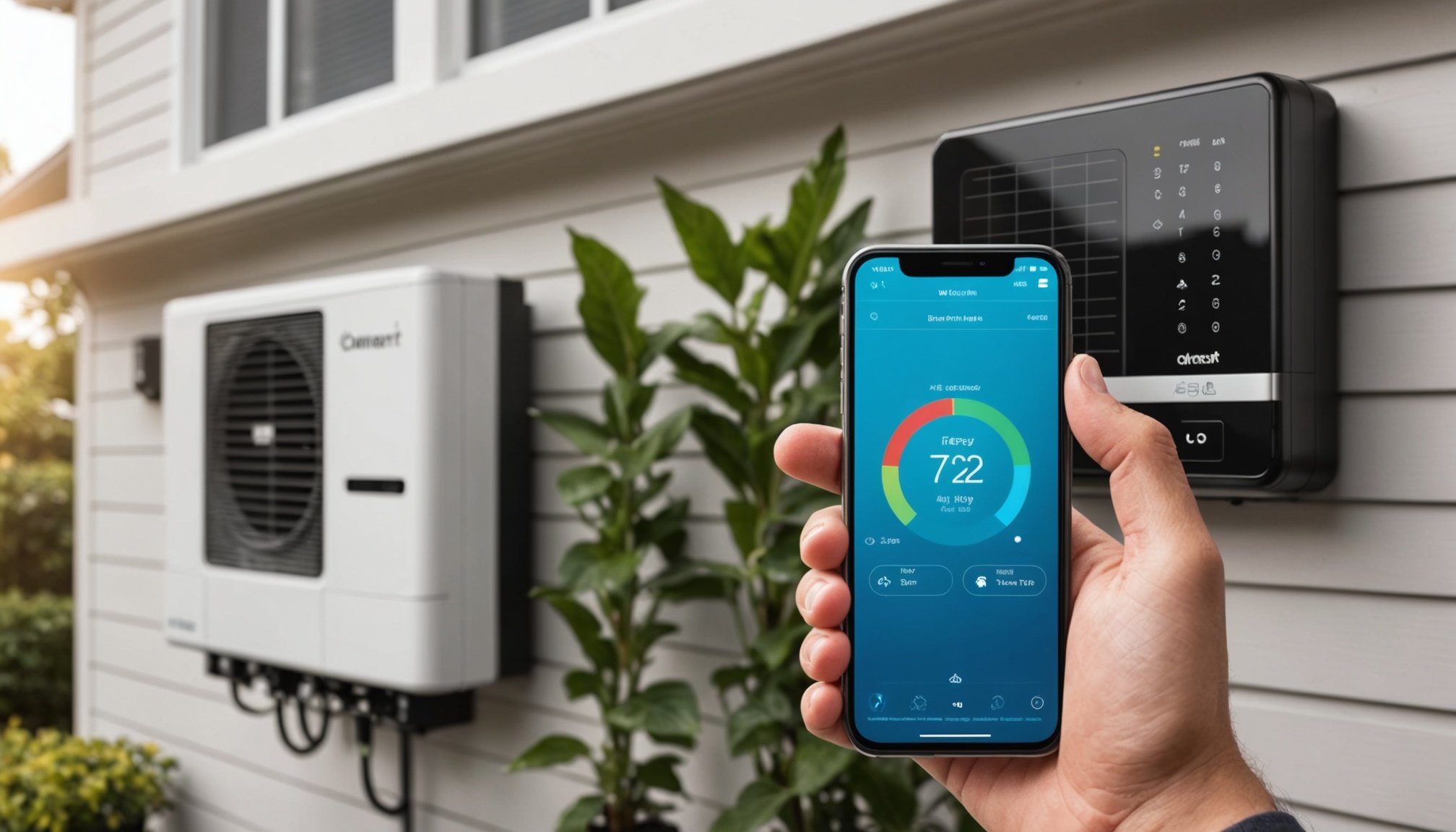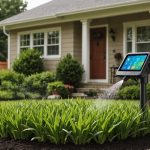Understanding Smart Air Conditioning Systems
Smart air conditioners are revolutionizing how we control our indoor climates. These innovative devices allow seamless remote control through smartphone integration, providing users with flexibility and ease of use.
With a smart air conditioner, you can effortlessly adjust the temperature, change settings, or even turn the system on or off from a distance. This is achieved by pairing the unit with a dedicated smartphone app that acts as a central hub for all the device’s functionalities. Such integration ensures you are no longer tethered to physical remote controls, making it particularly useful when you’re on the go or coming home after a long day.
Also read : Mastering smart irrigation: effortlessly control your home watering system with your smartphone
Several key features distinguish smart air conditioners from traditional systems. Primarily, they offer energy-efficient operation by optimizing temperature settings according to user preferences or even weather conditions. The ability to schedule cooling cycles through an app ensures that homeowners can save on energy costs without compromising comfort.
Smart air conditioning systems often include additional functionalities such as voice control and compatibility with popular smart home ecosystems. These features further simplify management, providing a fully integrated smart home experience that prioritizes convenience and energy efficiency.
In parallel : Ultimate guide to efficient email management: essential strategies for effortlessly managing multiple accounts on your tablet
Setting Up Your Smartphone to Control Your AC
Integrating your smartphone with a smart AC system can transform your home climate management into a seamless experience. To begin, follow this step-by-step installation guide:
-
Select a suitable smart AC system: Ensure your chosen model is compatible with your existing home environment. Compatibility includes confirming your Wi-Fi specifications, checking your current ducts or windows, and ensuring smart technology compatibility.
-
Download the recommended app: Most smart AC systems provide an app tailored for efficient management. Popular choices include apps like Smart Air and EcoBreeze, which offer user-friendly interfaces coupled with robust functionalities.
-
App configuration: Open the downloaded app and follow the on-screen instructions to connect it to your smart AC. This may include scanning a QR code on your AC or entering a code provided in the manual.
-
Initial setup completion: Configure the app settings according to your preferences. This often includes setting the desired temperature ranges, scheduling operation times, and activating energy-saving modes if available.
Setting up your smart AC offers improved comfort and energy efficiency, with these simple steps ensuring your home remains at the optimum temperature year-round.
Features of Smartphone Apps for Air Conditioning Control
When exploring AC control app features, users can expect a variety of functionalities designed for convenience and efficiency. These apps typically offer smart thermostat functions that allow users to adjust temperature settings remotely. Key functions often include the ability to change modes, alter temperature settings, and control multiple units or zones within a property.
The user interface in these applications is critical. A well-designed, user-friendly interface ensures that users can easily navigate the app, access different settings, and optimize their home atmosphere with minimal effort. Clear icons, intuitive navigation paths, and responsive design contribute to a seamless experience, making smart control accessible to everyone.
Advanced features enhance the value of these apps, offering benefits beyond simple temperature control. Many apps support scheduling, enabling users to set heating or cooling to activate at specific times, which can lead to energy savings. Additionally, some applications offer energy tracking features. This functionality provides users with insights into their energy consumption patterns, helping them make informed decisions about their usage and identify ways to maximize efficiency.
Smartphone apps for air conditioning control are poised to revolutionize how users approach home climate management, offering both practicality and enhanced control.
Troubleshooting Common Issues
Navigating air conditioner troubleshooting when using a smartphone app can sometimes be daunting. Users frequently encounter issues with app connectivity or remote management problems. To ensure smooth operation, it’s crucial to establish a solid connection between your smartphone and air conditioning unit. Commonly, connectivity interruptions arise due to unstable Wi-Fi networks or incorrect app settings.
If this happens, start by checking your Wi-Fi connection strength and ensuring both your smartphone and air conditioner are connected to the same network. Additionally, verify that the app settings match your air conditioner’s model specifications. Restarting your modem and router can sometimes resolve network issues.
For app issues, such as frequent crashes or unresponsiveness, ensure your app is updated to the latest version. Clearing the app cache or reinstalling it can also help address these problems.
Should you continue experiencing remote management problems or if the solution seems beyond personal troubleshooting, contacting technical support is advised. They can provide specialised guidance, ensuring any persistent problems are professionally handled. Knowing when to seek help facilitates a seamless experience with your air conditioner’s smart features.
Enhancing Energy Efficiency Through Smart Controls
Embracing energy-efficient cooling solutions like smart air conditioning systems can lead to significant environmental and financial benefits. One of the standout features is the integration with mobile devices, allowing users to control their AC remotely. By using their smartphone to adjust settings, occupants can ensure that their cooling systems are not operating needlessly, thereby achieving noticeable cost savings on energy bills.
Smart thermostats are at the heart of this innovation. They allow for optimal settings by learning user preferences and schedules, and automatically adjusting temperatures to conserve energy while maintaining comfort. For instance, these thermostats often feature modes that adapt to weather changes or individual room needs, optimizing usage and maximizing efficiency.
The environmental benefits of utilizing smart AC technology extend beyond individual households. By reducing overall electricity demand, these systems contribute to lower greenhouse gas emissions. This collective reduction in energy consumption assists in combating climate change, supporting a more sustainable future.
In summary, the advantages of a smart thermostat in an air conditioning system are multifold. They not only promote energy efficiency and cost effectiveness but also play a crucial role in our broader environmental strategy.
Comparing Different Air Conditioner Brands and Apps
When evaluating the best smart AC brands, it’s essential to consider not only their features but also how well they integrate with various apps. To provide a comprehensive view, let’s explore some top contenders and their distinctions.
Overview of Leading Smart Air Conditioner Brands
In the burgeoning market of smart air conditioners, brands such as EcoCool, MightyCool, and AirSleek have made significant strides. EcoCool is praised for energy efficiency, while MightyCool stands out for robust durability. AirSleek, however, excels in sleek design and cutting-edge technology.
Comparison of Features and App Integrations
EcoCool is equipped with features like Wi-Fi connectivity and a user-friendly app for remote adjustments, making it a convenient choice for tech-savvy consumers. MightyCool also offers a comprehensive app interface, albeit less intuitive, but shines with its air purification capabilities. The AirSleek app enables voice control integration, seamlessly syncing with virtual assistants like Alexa and Google Home.
Real User Testimonials and Experiences
Real-world feedback is invaluable. Users of EcoCool appreciate its ease of use, while MightyCool receives accolades for reliability under high-demand conditions. AirSleek often impresses with its aesthetic appeal and voice command responsiveness. Customer testimonials highlight these unique selling points, offering insights into true user satisfaction.
Practical Examples of Smart Air Conditioning in Action
Smart air conditioning can significantly improve home comfort. Smart home scenarios show how these systems seamlessly integrate with other smart devices. In real-world applications, users report enhanced convenience and energy savings. By enabling smartphone control, smart AC units allow users to adjust temperatures remotely.
Let’s explore user case studies demonstrating these benefits. Sarah, for example, uses her smart AC to maintain a perfect temperature, whether she’s working from home or on vacation. She appreciates the comfort of returning to a cool home without wasting energy unnecessarily.
To illustrate further, Alex’s experience with a smart AC proves invaluable on scorching days. By using geofencing technology, the system activates as soon as he’s near home. This eliminates unnecessary cooling when the house is empty, perfectly aligning with his routine.
For those considering smart AC control, here are practical tips for integration:
- Connect your smart AC with existing smart home systems for seamless automation.
- Utilize scheduling features for consistent, energy-efficient climate control.
- Explore integration with voice assistants for hands-free temperature adjustments.
These real-world applications and user experiences underscore the transformational impact smart AC systems can have within smart home scenarios.











